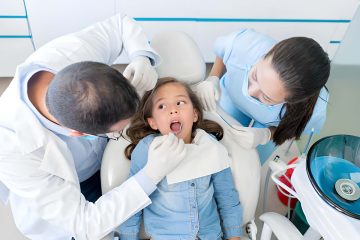Beyond The Curve: Sailing Through Scoliosis
Scoliosis affects your spine leading to an abnormal curvature. It can affect children as well as adults. By early detection, this condition can be treated depending on the severity of the curvature.
McNulty Spine specialists and orthopedic surgeons are skilled in offering expert diagnosis and treatment for scoliosis to patients of all ages.
What is scoliosis?
Your spine comprises rectangular-shaped stacks called the vertebrae. When viewed from behind it normally appears straight. However, when affected by scoliosis the spine is curved, often appearing like an “S” or “C” with an unusual rotation of the vertebrae.
How is scoliosis caused?
Below are possible causes of scoliosis:
- Neuromuscular conditions
- Cerebral palsy
- Poliomyelitis
- Muscular dystrophy
- Congenital (develop due to birth defects)
- Degenerative disorders
- Osteoarthritis
- Idiopathic (when the cause is not known)
- Leg length discrepancy
- Syndromic scoliosis (commonly occurs due to Marfan syndrome)
- Osteoporosis
- Other causes
- Poor posture
- Connective tissue disorders
- Injuries
Risk factors for scoliosis include:
- Family history (a genetic disorder that runs in the family)
- Females are at a higher risk
- Often develop during a growth spurt just before puberty
What are the clinical features of scoliosis?
Some common and characteristic signs of scoliosis include:
- A person may appear to lean on one side
- Uneven shoulders
- Uneven hips
- Rotating spine
- Uneven breasts or chest wall
- Back pain
- Breathing difficulties
- Disproportionate shoulder blades
- Height loss and appear shorter
How is scoliosis diagnosed?
Your doctor will initially evaluate your symptoms, and personal and family history. This is followed by a physical examination to assess the degree of curvature. This is determined with the help of a tool called scoliometer that measures the degree of scoliosis. An angle greater than 10 degrees indicates scoliosis.
Furthermore, you will be advised to undergo imaging tests to assess the shape, direction, location, and angle of the curve. These include:
- X-rays
- CT scans
- MRI
How is scoliosis treated?
Treatment for scoliosis usually depends on your age, severity, and extent of the spinal curvature.
Mild curves
Children and adults are recommended routine checkups with X-rays and close monitoring of the condition.
Severe curves
In children with a curve of 25 to 40 degrees, your doctor may recommend wearing a brace to prevent the curve from getting worse.
For adults with a curve of 40 degrees or higher, your doctor may suggest spinal fusion surgery to correct the curve.
Conclusion
Scoliosis tends to arise in childhood or adolescence with an unknown cause. However, it is essential to consult a healthcare professional for further courses of action. Untreated cases can worsen the curve leading to life-threatening consequences.















